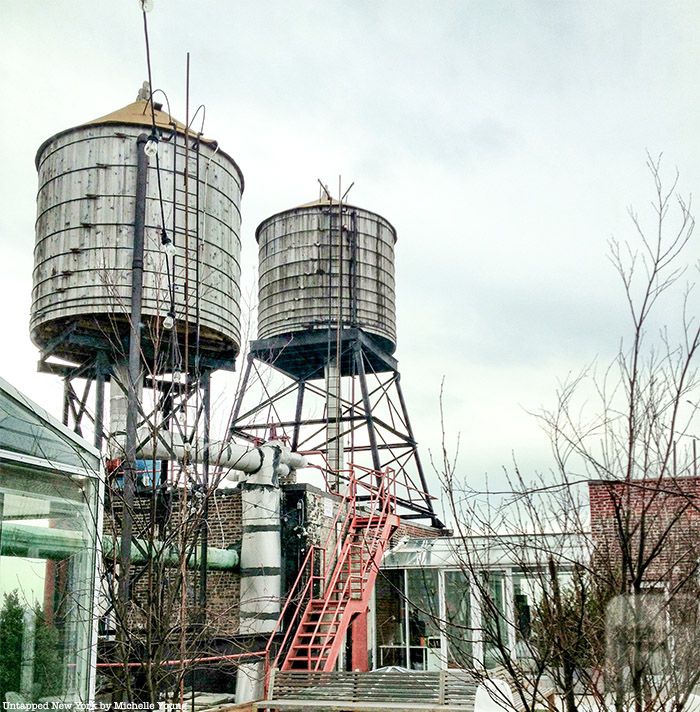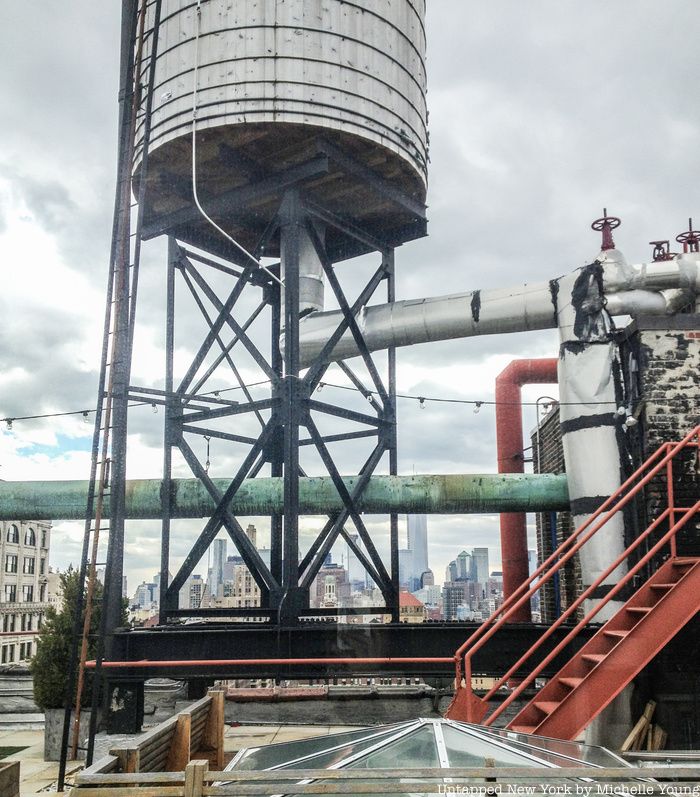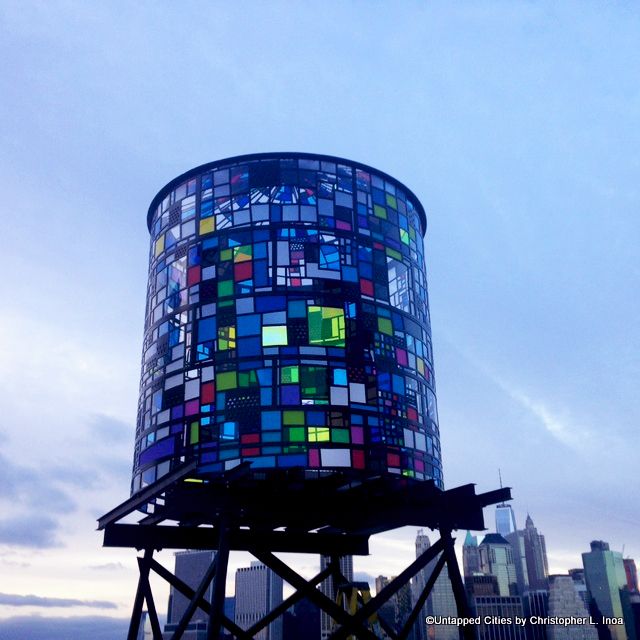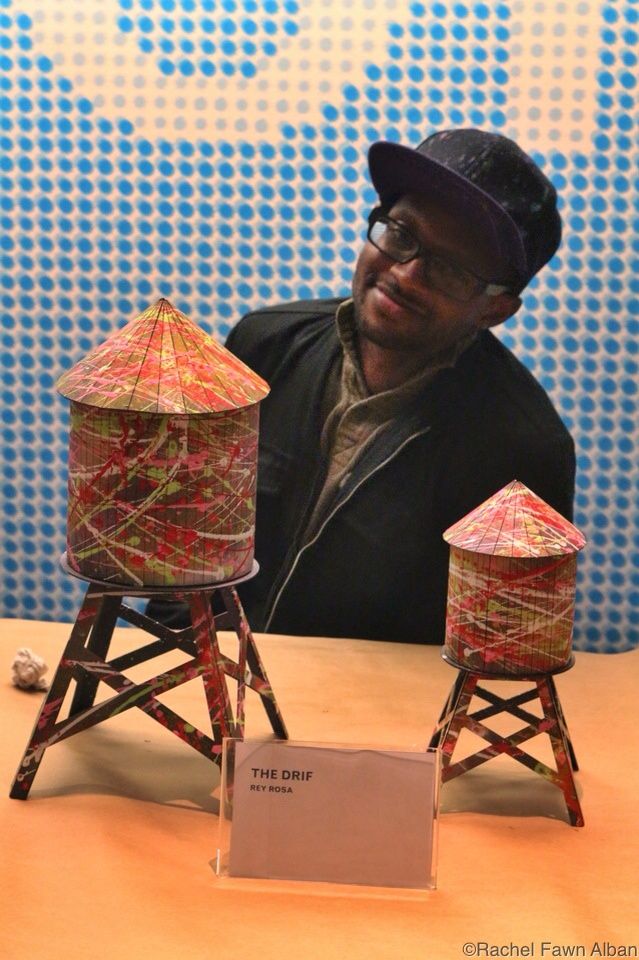Koryo Books: Where K-Pop Fans and Book Lovers Converge in NYC
Established over 40 years ago, this Koreatown store has evolved from a community bookshop into a global cultural destination!


The second episode of our The Untapped New York Podcast is all about the New York City water tower! In it, we answer questions like: how do water towers work? How many water towers are there in New York City? What are the water tower companies that build, install, and service the rooftop on top of the buildings in this city? You’ll learn about the different types of water tanks — the classic wood water tower and the more modern metal ones. We’ll also explore why New Yorkers love the water tower so much.
We’ve got a lot of fun guests in this second episode of The Untapped New York Podcast which explores how water towers work and why New Yorkers find them so endearing. We speak with artist Tom Fruin, who makes those amazing glass water tower sculptures, with Larry Hoffman, a New Yorker and Untapped New York reader who spent his career installing water towers, and the duo behind Boundless Brooklyn who designed a DIY water tower kit that I’ve put in every office and apartment I’ve had. Justin Rivers, Untapped New York’s Chief Experience Officer who knows everything about New York City is back in this episode too.

The New York City water tower is one of the most iconic and ubiquitous elements in the city’s skyline. So much so that it has become an oft-used symbol of the city itself. And over the years, it’s become much more than just the functional object it was designed as. New Yorkers seem to literally have an emotional connection to water towers with a fervency that doesn’t seem to fade over time. Even though you’ve seen the water tower in brand logos and as art, the object has somehow withstood commodification.
So as background, the first thing you need to know is that New York City’s water comes from upstate New York. In fact, it comes from reservoirs made by the drowning of many towns over a hundred years ago. Water comes down to this great city by gravity. It gains enough speed and pressure that by the time it gets to New York City, the water can go up six floors naturally. That’s about 60 to 75 feet. But if you want to get it up any higher, you need pumps and a water tower to store it. That’s why the water tower is tied directly to the inexorable quest to build taller and taller in New York City. Even though the technology for building skyscrapers has evolved dramatically, the humble water tower remains the most efficient way to store water. The next time you’re walking around, look closely at some of the tallest and most modern buildings in New York and you might see a wooden water tank peeking out at the top.

How many wooden water towers and hidden water towers can you spot?
The traditional wooden water tower is almost shockingly simple: cedar wood planks held together by the pressure of steel hoops on the exterior. No glue, nails, or screws are needed. The wood offers a natural insulation that helps the water from freezing in the winter and the material has a clear edge over a more modern material like concrete. You’d need concrete walls about two feet deep to achieve the same level of insulation. These benefits explain why the water tank is still so common in New York City, with roughly 10,000 to 15,000 tanks still on the city’s rooftops.

The pipes below a water tower
The oldest water tower (or water tank) company in New York City is the Rosenwach Tank Company which also has the distinction of being the only company in the city that cuts the wood, measures, and fits everything together. Rosenwach Tank Company was founded in 1866 by a barrel maker named William Dalton in New York City’s Lower East Side, who sold the business to the Rosenwachs in 1896 for a steal of $55. For many years, the Rosenwach Tank Company was located in Williamsburg and more recently has moved to Astoria. The Rosenwach Tank Company has just two competitors: Isseks Brothers and American Pipe and Tank’s New York Wood Tank subsidiary. Both of them have also been around for over a hundred years.
Water tanks are usually either made from yellow cedar or California redwood, although these materials have been harder and harder to come by for a good price. The pieces of the water tower are fabricated off-site, and then brought up in pieces through the stairs of a building. They’re often too big to fit into a freight elevator. The vertical pieces, called staves, are shaped to fit right into grooves on the wooden floorboard of a water tower which sit on top of a metal base. In the podcast, we speak to Larry Hoffman, who is an expert at water tower installation and plumbing. He explains the process of getting the water tower to the roof, its installation, and how the system works internally to monitor the water levels (which functions much like how a toilet works with a regulator valve, or more recently with electronic probes).

The city’s fire codes ensure that some kind of water storage system needs to be in place, be it the traditional wood water tower or metal tank. But as Larry describes in the podcast episode, metal tanks do have their drawbacks. Depending on the size of a building, it might have one, two, or even three rooftop water towers.
In the rest of the episode about New York City’s water tanks, we cover the Night Heron Speakeasy, a pop-up speakeasy that was located inside a water tower in 2013 (the brainchild of N.D. Austin of Threesome Tollboth, someone I describe as a modern-day impresario. He does what he calls “transgressive placemaking.” It was the most coveted ticket which you couldn’t get a ticket to, because invitations came by way of an old fashioned pocket watch that a previous guest might gave you. N.D’s partner in crime, Ida de Benedetto describes the gifting admission system as a “sophisticated manifestation of user generosity to provoke engagement and transformation in the face of certain risk.” To get to the speakeasy, you climbed up a construction ladder into a hatch in the floor of the water tower. The interior could fit about a dozen people and was lit up with candle light. Cocktails were shaken and poured, and on a platform above the guests, musicians performed.

Tom Fruin’s water tower in Brooklyn Bridge Park
We also speak with Tom Fruin, because if there’s one artist associated with the water tower, it would be him. Perhaps you’ve seen his colorful glass water towers at Brooklyn Bridge Park, or in Williamsburg, or Dumbo, or Hudson Yards. Or his glass Danish houses in places around New York City. His works bring such joy to the places they are installed in, a literal rose colored glass to see the city through.

Street artist The Drif with his painted Boundless Brooklyn water towers
And finally, the guys behind Boundless Brooklyn, David and Terrence, provide more context as to why they chose the water tower as their first product and why New Yorkers seem to love the water tower so much. For more on how waters work and more, listen to the latest episode of The Untapped New York Podcast below! And subscribe to the The Untapped New York Podcast on Apple Podcasts, Spotify, and all of your favorite podcast apps
Next, check out our first episode about pneumatic tube mail.
Subscribe to our newsletter